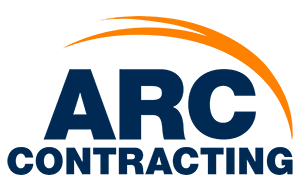Things You May Not Know About Flood Insurance
 Last week we talked about preventing basement flooding this spring. Now let’s talk about why it’s important. Not just because you don’t want your stuff to get wet, but because your insurance plan probably doesn’t cover flood damage claims.
Last week we talked about preventing basement flooding this spring. Now let’s talk about why it’s important. Not just because you don’t want your stuff to get wet, but because your insurance plan probably doesn’t cover flood damage claims.
Homeowners and landlords with property in high-risk areas are required to purchase flood insurance in order to take out a loan. But those in moderate to low risk areas aren’t required to do so leaving many people at risk. Even though the risk is smaller, you should still consider investing in flood insurance. According to the NFIP, people outside of high-risk flood areas make up almost 25% of all National Flood Insurance Program flood insurance claims. Even if your area hasn’t been prone to flooding in the past, that doesn’t mean it can’t happen in the future.
Policy Types:
Building Policy: This is the basic policy for homeowners. It includes the structure of your home and the systems needed to keep it running.
Contents Policy: If you want coverage on more than just the basics consider getting an additional contents policy. This will include coverage on the possessions inside your home including furniture, electronics, and other valuables.
Coverage:
Make sure to go over what is all covered in your policy plan. Most plans include the structure and foundation, electrical and plumbing systems, cabinetry, HVAC systems, built-in appliances (furnace, water heaters, circuit breakers, refrigerators, stoves), and carpeting. Debris removal is only sometimes included so be sure to ask your insurance agent. Another thing to know about your coverage plan is the indirect coverage. What instances that are related to the flood are covered? If a flood caused sewage backup or fires, know if you’re still covered.

What’s Not Covered
Just like you should know what is all covered, you should also know what isn’t covered before signing a flood insurance policy.
- Damage caused by moisture, mildew or mold
- Currency, precious metals and valuable papers such as stock certificates
- Property and belongings outside of an insured building (trees, septic systems, decks, patios, hot tubs and swimming pools)
- Living expenses such as temporary housing
- Financial losses caused by business interruption or loss of use of insured property
- Most self-propelled vehicles, such as cars
Source: www.floodsmart.gov
Where To Buy:
There is a 30-day wait period before your flood insurance takes affect, so be sure to get a policy plan now. There are more than 80 insurance companies that sell flood insurance. A policy can also be bought from property insurance agents. If you have questions, talk to your insurance agent and they can get you connected to the right people.



